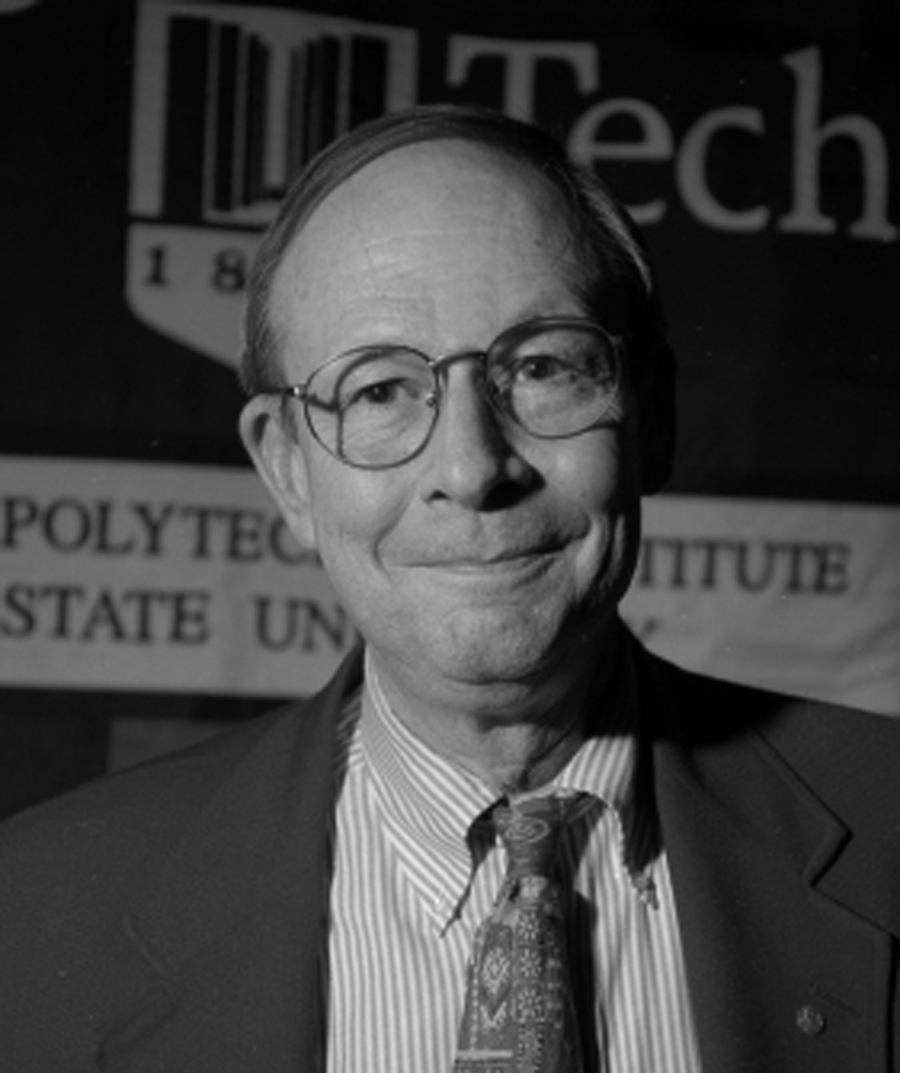In memoriam: Robert Richardson, Virginia Tech alumnus and Nobel Laureate

Alumnus Robert Richardson, Nobel Laureate physicist and member of the College of Science Roundtable, died Tuesday, Feb. 19 in Ithaca, N.Y. He was 75.
Richardson, who received both his Bachelor of Science and Master of Science degrees from Virginia Tech in 1958 and 1960 respectively, received the Nobel Prize in Physics in 1996 for his work on superfluidity in helium-3, a breakthrough in the area of low-temperature physics.
“This is a great loss for us,” said College of Science Dean Lay Nam Chang. “Bob was a member of our roundtable and had been an ardent supporter of our college. He shall be missed.”
The passing of Richardson marks the second death of a Nobel Laureate associated with the college in as many months. Economist James Buchanan, who received the Nobel in 1986, passed away in January.
Richardson entered Virginia Tech in 1954 after graduating from Washington-Lee High School. As he recalled in his autobiography, “The biology and physics courses were very old fashioned … and I was taught that absolute zero is the temperature at which all motion stops. It is most fortunate the statement was wrong. Otherwise (Helium-3) could not become a superfluid.”
Starting college life as an electrical engineer, Richardson became bored with the mechanical drawing course and the “rote memorization of a single principle, Kirchoff’s Laws,” and he briefly switched to chemistry but ran into difficulty because of his color blindness. He finally turned to physics.
“I graduated with a B average … my education through the cadet corps was at least as valuable as that in formal class training,” he said in his autobiography. “The rigorous honor code at [Virginia Polytechnic Institute] in those days was almost exhilarating. We were all very proud of it.”
Richardson considered a graduate program in business with the thought of becoming an executive but decided he hadn’t given physics research a chance. He opted to remain at Virginia Tech for an additional year to obtain a master’s degree and during that time gained confidence that he could learn physics at advanced levels.
After serving six months on active duty in the U.S. Army, he entered Duke University in 1960 where he met his wife, Betty, also a physics graduate student, and they were married in 1962. He joined the staff of Cornell University in 1966 where he remained as a researcher and where he and Betty both taught undergraduate physics.
Information on funeral services is not yet available.



.png.transform/m-medium/image.png)
